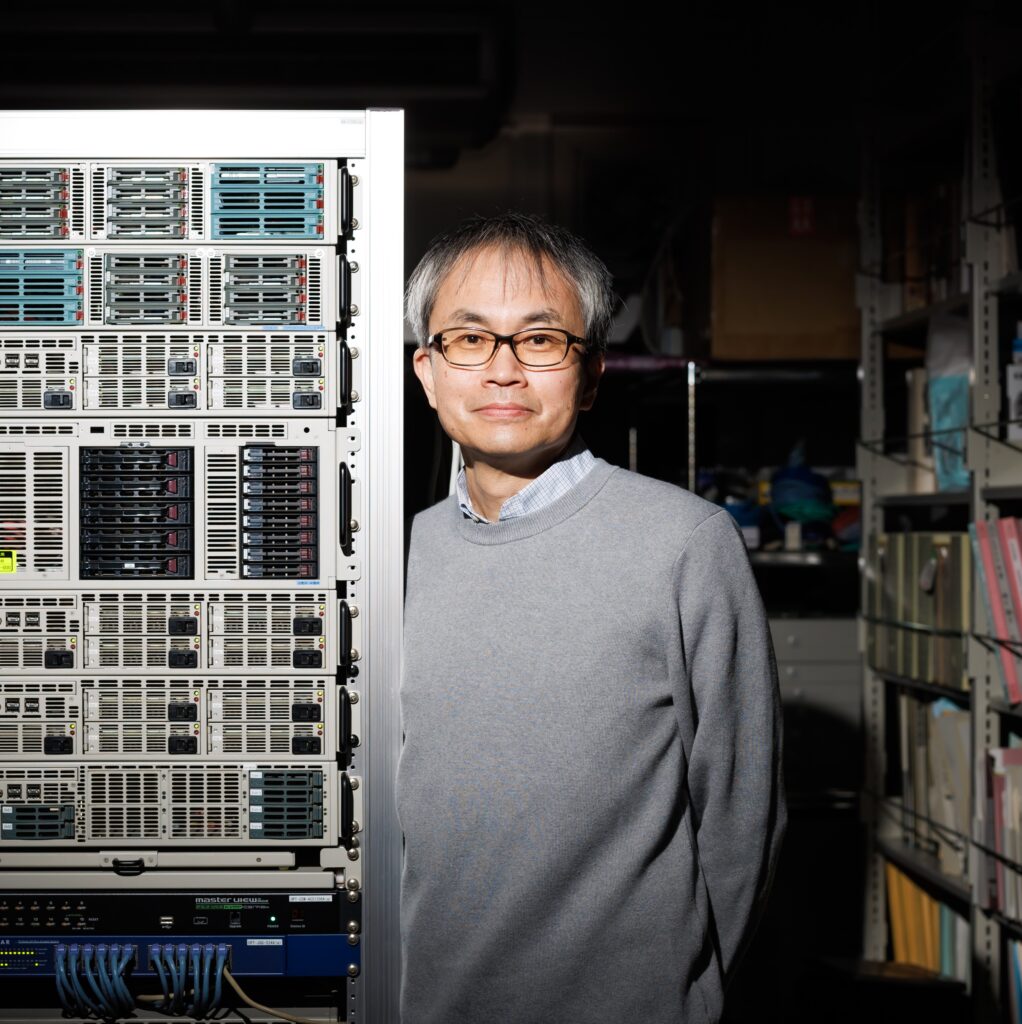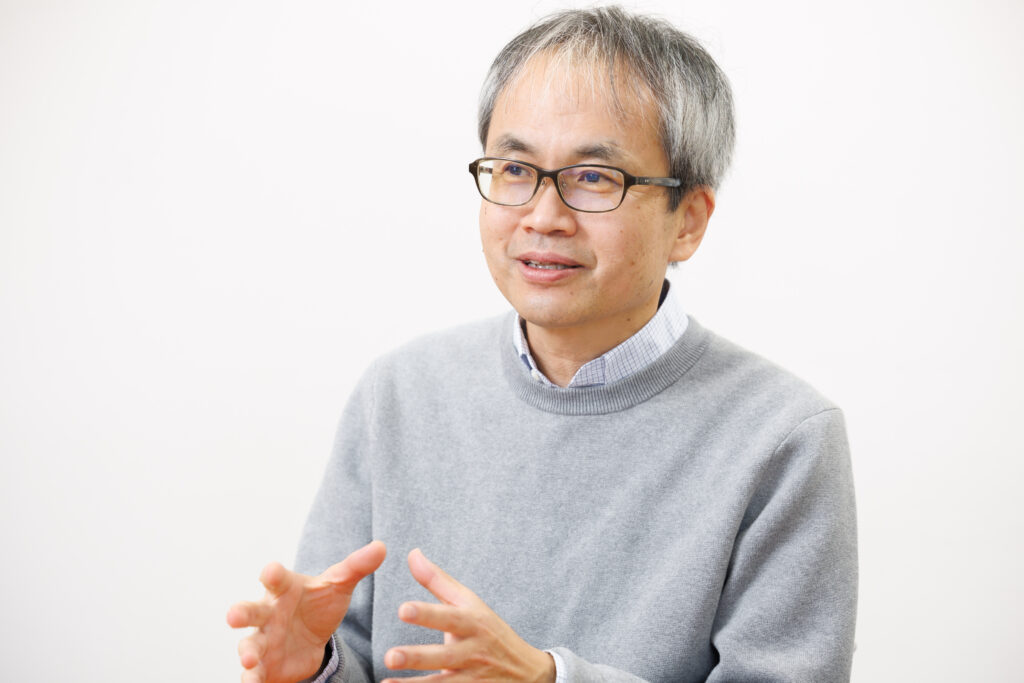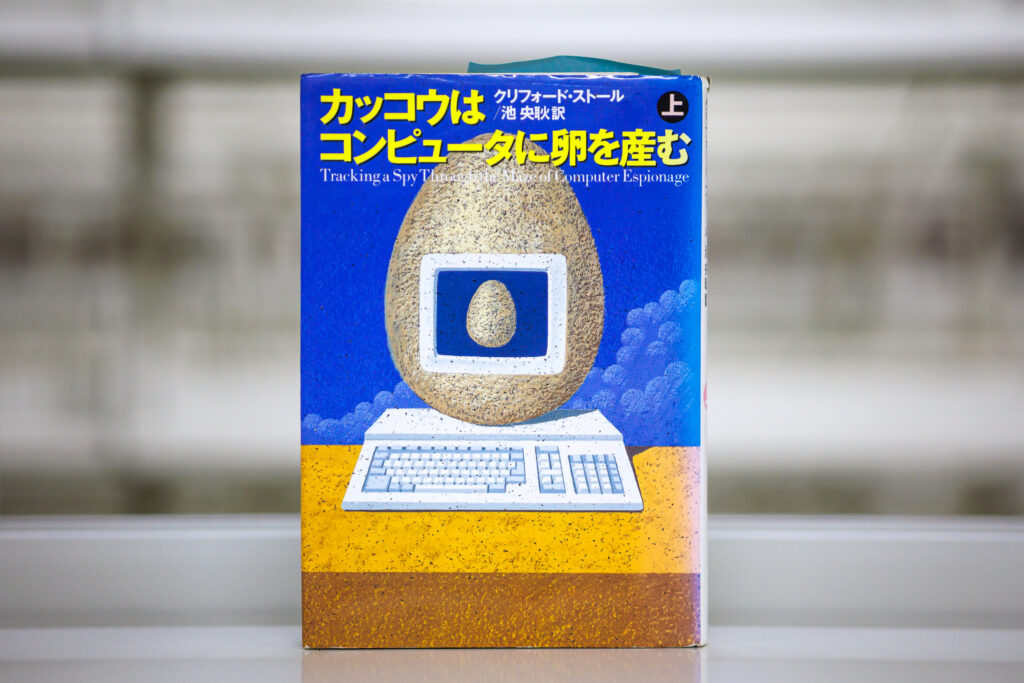
Professor Shinkoh Nambu from the Faculty of Science and Technology uses computers to conduct virtual experiments regarding various phenomena in chemistry. He talks about research that reveals the microscopic world using theoretical chemistry—including the measurement of a substance called nitrous oxide (N2O) found in the atmosphere and relevant to environmental issues—and its fascination.
Many people think of chemistry as experimental chemistry, where you handle substances with your own hands and observe reactions and changes. I specialize in theoretical chemistry, an area of study where the mechanisms of facts revealed by experimental chemistry are proven at the microscopic level of atoms and electrons through virtual experiments using computers.
An example of my research is related to nitrous oxide (N2O), a greenhouse gas that is found in exhaust gas and such like. Using computer simulations, we show the amount of isotopes with the same properties as N2O that have accumulated in the atmosphere, and places where they build up easily. We are also seeing success in leading the world in virtual experiments for building the molecular design of fluorescent tags used in analyzing the effectiveness of carcinostatic agents and encapsulating hydrogen atoms in the substance C60 fullerene found in the material known as carbon nanotube.
Received inquiries from NASA and from a laureate of the Nobel Prize in Chemistry

Experiments that are difficult to conduct in reality due to enormous scale or danger can be verified using computer simulations. In the case of N2O, actual experiments adopt the method of launching balloons and similar from the ground to measure substances in the upper atmosphere.
However, there is a limit to this method, including difficulty in investigating distribution over a wide area. In this sense, computer simulations can even allow us to understand the circulation of N2O across the entire globe. Given that we have received inquiries from NASA about this research, I expect my research to be useful in areas such as simulating the atmosphere of Mars.
In theoretical chemistry, it is common for us to make our own software for execution on computers and conduct experiments using it. In other words, there are many technologies that can only be handled by the respective researcher. I often receive proposals for joint research from researchers both in Japan and overseas. My biggest surprise was receiving a request from the American Professor Rudolph Marcus, a laureate of the Nobel Prize in Chemistry. This is one of the most memorable moments in my research career.
Excellent fit for young people who like mathematics and computers
As my field of research requires knowledge of mathematics and computers, it is said to be an excellent fit for young people. At the same time, when conducting computer simulations, experience is important for predicting the kind of data to use in order to get as close as possible to reality. Of course, detailed knowledge regarding the research theme is necessary for successful computer simulations.
For example, knowledge of the environment in the case of N2O, and medical knowledge in the case of fluorescent tags. These are completely different worlds, and I participate in the relevant academic conferences and such in pursuit of information to deepen my knowledge. The accumulation of such efforts can lead to ideas for getting closer to the real world.
Chemical experiments in the real world, even simple ones, may not succeed if there is any tiny mistake in the procedures. For computer simulations, however, as long as you understand the method of analysis, anyone can obtain the same answers. This accuracy is also its greatest appeal. Theoretical chemistry is also starting to see applications in biological fields, and in some research fields computer simulation is more advanced than in experimental chemistry. My dream now is to further develop this area of study—with applications expected in a wide range of fields—while enjoying the process together with young students.
The book I recommend
“Kakko wa Konpyuta ni Tamago wo Umu”(The Cuckoo’s Egg: Tracking a Spy Through the Maze of Computer Espionage)
by Clifford Stoll, Japanese translation by Hiroaki Ike, Soshisha Publishing

This book details the experience of the author, an astronomer who had been made a novice system administrator, in fighting single-handedly against a hacker. When I first read the book, computers were still rare in Japan. Through this book, I came to understand the fun and profoundness of computers and learned how to handle them adeptly.
-
Shinkoh Nambu
- Professor
Department of Materials and Life Sciences
Faculty of Science and Technology
- Professor
-
Graduated from the Department of Chemistry, Faculty of Science and Technology, Keio University. After working at places such as the Institute for Molecular Science Computer Center, conducted development of a method for calculating transition wavepacket dynamics that can be applied to polyatomic molecules at Argonne National Laboratory in the state of Illinois, US. He worked at Kyushu University before assuming his current position in 2009.
- Department of Materials and Life Science
Interviewed: October 2022